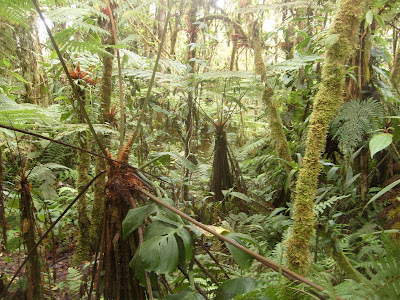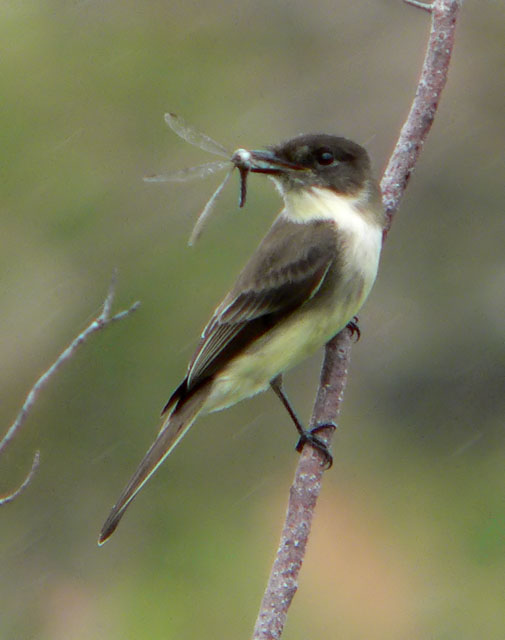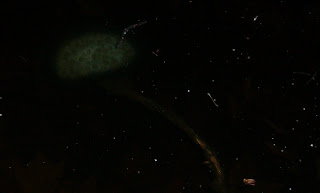
I've died and gone to a David Attenborough film! I'm here at Finca La Selva, the famous OTS research station at the lower end of the Sarapiqui river. I've been here barely 24hrs and seen (get ready...): Howler monkeys, spider monkeys, pecaries out the wazoo (like St. Cat's pigs), lattice tailed trogon, montezuma oropendula, dozens of other beautiful but unidentified passerines and hummingbirds, iguanas, central american whiptails, bronze backed climbing skinks, a dink frog (common and somewhat boring, but included for sake of comprehensiveness), cane toad (same), numerous small as-of-yet unidentified lizards, a eyelash pit viper (yeah, open y'alls mouths and drool; I'll come back to this...), golden orb weaver spiders (biggest web-weaving spiders around, much larger than those in the states), some ctenid spiders and huge lycosids, grasshoppers the size of my hand, moths the size of my face, fish, flowers, vines and myriapods- in short paradise. Been having trouble with camera batteries so all I've got to put up is one Eyelash pitviper pic, but being an eyelash pit viper I think it's awesome enough by itself. Saw this guy on our orientation walk barely a couple of hours ago; I'm pretty sure my life is now complete (though I would like to see a jaguar before I go). Oh, forgot to mention the beyond awesome members of Formicidae, specifically leaf cutter ants and bullets ants. Leaf cutter ants are all over the place here, busily chopping away at the understory leaves. They form long trails of bare dirt across the forest floor and busily carry leaves along them to feed the fungus in their mounds (see video). Bullet ants are about 2.5cm long, the hugest ants I've ever seen. They can both bite and sting, and get their name from the pain associated with the latter of these two. Anyway, I'm in an awesome rainforest and frankly have better things to do that sit behind a computer, so I'm signing off here.
Your's in bioawe (bio-awe),
Ornithorhynchus, Roving Fellow
Your's in bioawe (bio-awe),
Ornithorhynchus, Roving Fellow
Eyelash palm pitviper
Leafcutter ants
















 The crew hangs on for dear life
The crew hangs on for dear life